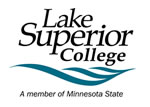
Procedure 5.15.1 - Sustainable Purchasing
Part 1: Purpose
To promote economic, ethical, environmental, and social considerations in all purchasing decisions while maintaining standards of cost and value in all purchases made for institutional use.
Part 2: Definitions
Subpart A: Environmentally Preferable Products. The U.S. Environmental Protection Agency (EPA) defines Environmentally Preferable Products as products or services that have a lesser or reduced effect on human health and the environment when compared with competing products or services that serve the same purpose. This comparison applies to raw materials, manufacturing, packaging, distribution, use, reuse, operation, maintenance, and disposal.
Subpart B: Environmentally Preferable Purchasing. Environmentally Preferable Purchasing seeks the overall best value, taking into account price competitiveness, availability, regulatory requirements, performance, and environmental impact.
Subpart C: Life Cycle Cost. Life cycle cost takes into account the sum of all costs of a product including but not limited to: ecological cost of development, initial purchase price, installation, service, general operation, maintenance, potential upgrades, disposal, and potential residual value. This total cost may not be directly quantifiable, but these factors should be considered in all purchasing decisions when feasible.
Part 3: Responsibility
It is the responsibility of each cost center manager at Lake Superior College (LSC) to initiate environmental purchasing relative to intended use. When considering environmentally preferable products, the entire life cycle cost of products should be evaluated and considered. More expensive products simply termed “green” or “eco” with comparable life cycle and performance to its “non-green” or “non-eco” counterpart may or may not warrant purchase if significant ethical, environmental, and/or social benefit is not evident. Consistent with MN Statute 16C.0725, recycled content materials shall be considered “when feasible and when the price of recycled materials does not exceed the price of non-recycled materials by more than ten percent (10%)….”
This procedure applies only to the purchase of new materials, and in no way implies existing and useful appliances be mandatorily or prematurely replaced with environmentally preferable products. However, three-year or less payback for more energy efficient items may warrant early replacement.
Refer to EPA’s Final Guidance on Environmentally Preferable Purchasing or contact the Sustainability Council for assistance in life cycle or cost comparison of products.
Part 4: Guiding Principles
The following “Guiding Principles,” designed by the EPA, shall be used in environmental purchasing decision making:
- Guiding Principle 1: Environment + Price + Performance = Environmentally Preferable Purchasing
- Environmental considerations should become part of normal purchasing practice, consistent with such traditional factors as product safety, price, performance, and availability.
- Guiding Principle 2: Pollution Prevention
- Consideration of environmental preferability should begin early in the acquisition process and be rooted in the ethic of pollution prevention, which strives to eliminate or reduce, up-front, potential risks to human health and the environment.
- Guiding Principle 3: Life Cycle Perspective/Multiple Attributes
- Product or service’s environmental preferability is a function of multiple attributes from a life cycle perspective.
- Guiding Principle 4: Comparison of Environmental Impacts
- Determining environmental preferability might involve comparing environmental impacts. In comparing environmental impacts, Federal agencies should consider: the reversibility and geographic scale of the environmental impacts, the degree of difference among competing products or services, and the overriding importance of protecting human health.
- Guiding Principle 5: Environmental Performance Information
- Comprehensive, accurate, and meaningful information about the environmental performance of products or services is necessary in order to determine environmental preferability.
Part 5: Guidelines
LSC, where possible, will procure environmentally preferable products by considering short and long term implementation and costs, life cycle costs, and maintenance costs
Subpart A: General
- Purchase durable/multi-use as opposed to single-use or disposable
- Request environmentally favorable packaging materials from suppliers
- Distributing paper or biodegradable cups at campus events rather than bottled water
- Procuring local products where possible and financially feasible
Subpart B: Paper Purchases
- Purchase at least 10% post-consumer recycled copy and printer paper
Subpart C: Building Facilities and Furniture Purchases
- Build new structures to USGBC’s LEED Silver or equivalent standard
- Adhere to USGBC’s LEED Silver purchasing standards for all new construction
- Purchase the most energy and water efficient appliances and technology possible
- Request recycled construction and maintenance materials,
- Request rapidly renewable resources
- Purchase/replace appliances, light bulbs etc. with energy efficient alternatives where appropriate
- Purchase/replace toxic cleaning supplies with phosphate-free biodegradable alternatives such as GreenSeal or EcoLabel Certified where possible
Subpart D: Appliances and Electronics Purchases
- Specify ENERGY STAR-certified appliances and products where such products exist
- Utilize shared printers instead of personal printers where possible
- Purchase remanufactured ink and toner cartridges or soy-based inks
- Consider life cycle cost of all purchases to the extent feasible
Subpart E: Food Service Purchases
- Seek alternatives to plastic
- Procure local products where possible and financially feasible
- Purchase bio-based, compostable or recyclable plastic products where financially possible
- No styrofoam cups, plates, or containers shall be purchased regardless of cost savings
Subpart F: Donations
- Consider life cycle cost: including installation, supplies, maintenance
- Consider storage needs
- Consider costs associated with disposal
Subpart G: Vendors and Service Providers. These guidelines should be considered in contracted business with vendors and service providers.
Part 6: Reference Statute
- Minnesota Statute 115A, Waste Management
- Minnesota Statute 16C.0725, Purchase of Recycled, Repairable, & Durable Materials
- Minnesota Statute 16C.073, Purchase and Use of Paper Stock; Printing
- Minnesota Statute 115D, Toxic Pollution Prevention
- Minnesota Statute 116D, Environmental Policy
- Executive Order 99-4
History
Date Implemented: August 6, 2015
Related Policies/Procedures
Chapter 5: Administration
- 5.2 - Email Accounts - RESCINDED - SUPERSEDED BY 4.11 - Employee Email Communication & Expectations
- 5.11 - Tuition and Fees
- 5.12 - Tuition and Fee Due Date, Refunds, Withdrawals and Waivers
- 5.12.0 - Tuition and Fee Due Date, Refunds, Withdrawals and Waivers
- 5.12.1 - Military Service & Disabled Veterans
- 5.12.2 - Tuition Waiver for Persons Under the Guardianship of the Commissioner of Human Services
- 5.12.3 - Common Framework of Key Payment Related Dates
- 5.12.4 - Refund of Tuition and Fees
- 5.12.5 - Payment Plans
- 5.12.20 - Return of Title IV Funds
- 5.12.21 - Petition for Exceptions to Policy or Procedure
- 5.15 - Sustainable Purchasing
- 5.16 - Efficient Use of Water, Energy, and Other Resources
- 5.17 - Tobacco and Vape Free Campus
- 5.18 - Drug & Alcohol Free Campus
- 5.19 - Travel Management
- 5.20 - Special Expenses and Presidential Expense Allowance
- 5.21 - Possession or Carry of Firearms
- 5.22 - Acceptable Use of Computers and Information Technology Resources
- 5.23 - Video Surveillance and Recording
- 5.24.1 - Employer Provided Personal Protective Equipment
- 5.27 - Campus Security Authorities
- 5.30 - Vehicle Safety - RESCINDED - SUPERSEDED BY 5.19 - Travel Management
- 5.30.1 - Vehicle Safety - RESCINDED - SUPERSEDED BY 5.19 - Travel Management

